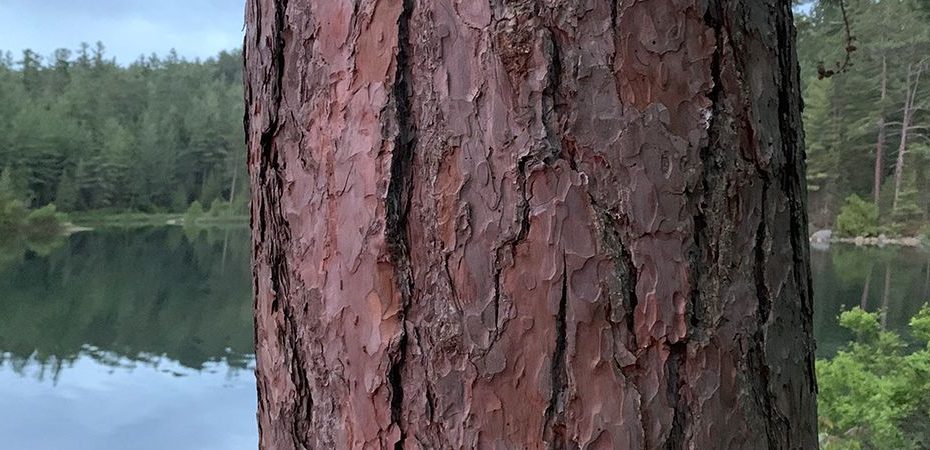Near the northeast corner of the City of Greater Sudbury is a lake that, when seen from the air, is a perfect silhouette of a wolf howling. The lake is called Wolf Lake. What makes this lake so special is not its coastline but rather its tall old-growth red pines. Wolf Lake is home to the largest remaining old-growth red pine forest in North America. It spans an impressive 1,600 hectares.
Wolf Lake is known for its canoeing, often referred to as the ‘Killarney of the North.’ When you land on the east shore of the lake a wall of red pines will greet you. Red pines of various sizes and ages, some from a metre tall to large ‘totem like’ trunks exceeding 30 metres in height. Most of these red pines are old-growth. To a forester a red pine older than 140 years of age is considered old-growth, yet some of these trees exceed 300 years of age. This may create an image of very large diameter trees, but this is not always the case here. Many of the red pines grow on the rocky quartzite hills and shallow soils are prevalent. Due to poor nutrients, the trees grow very slowly. For example, a tree that has a circumference of no more than the width of a human adult’s shoulders has been measured at nearly 250 years of age.
Red pine, Wolf Lake © Kristen Setala
The area is a classic fire ecosystem. Tree cores have revealed that the red pines have survived ground fires on a frequency of every 30 to 50 years. Seen from a distance most of the red pines appear like ships’ masts – tall and straight and having no branches until 15 metres up their trunks. Biologists believe that this may be a survival strategy for the trees experiencing frequent fires. When a fire is pushed by the wind travelling through the area, the lack of lower branches prevents the fire from ‘climbing’ the trunk, hence saving its crown.
Fire scar on red pine, Wolf Lake © Ryan Mariotti
The combination of the presence of all age classes of red pine and the fact that trees have survived multiple fires tells us that red pine is replacing red pine as the dominant tree species, which is a unique feature.
So why isn’t this area protected?
In 1999 the Ontario Government’s “Lands for Life” public planning process declared Wolf Lake ‘a park in waiting’, stating that once the mineral leases would lapse the area would become a park.
Mineral exploration has been going on in the area for over 40 years and to date no significant minerals have been discovered.
It is time that the area be recognized for its natural treasure. The old-growth red pine forest is a place of provincial, national and international significance. Let us protect Wolf Lake for once and for all!
Canoeists enjoying paddling Wolf Lake © Kristen Setala
There is some hope. Recently the Wahnapitae First Nation along with the Save Wolf Lake Coalition and Laurentian University’s Living With Lakes Centre submitted to the Federal Government an application to have 1,200 hectares of the old-growth forest reserve (excluding areas covered by mining leases, 400 hectares) become an Indigenous Led Conservation Area. We are waiting to hear this outcome.
What you can do is contact the Government of Ontario to ask that mining activity and exploration be halted within the old-growth red pine forest of Wolf Lake and that the site be permanently protected.
For further information visit this website and watch a short film on saving Wolf Lake.
Resources
The post Help Us Protect Wolf Lake Before It’s Too Late appeared first on Ontario Nature.
